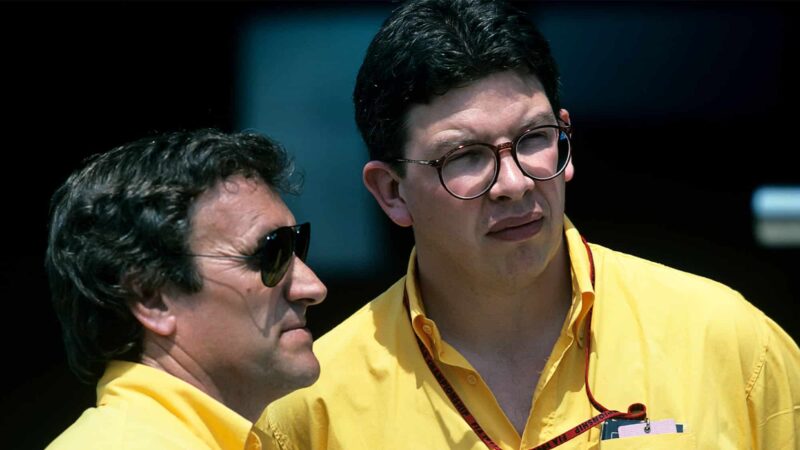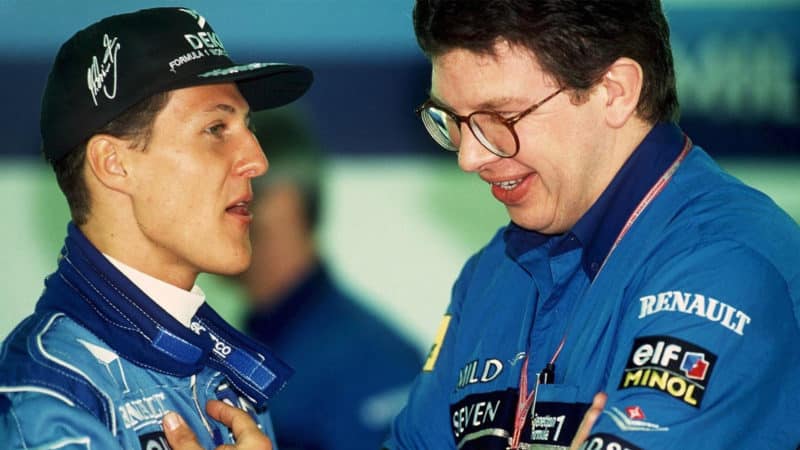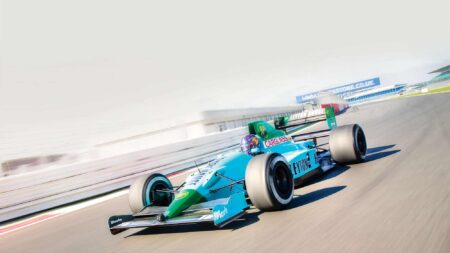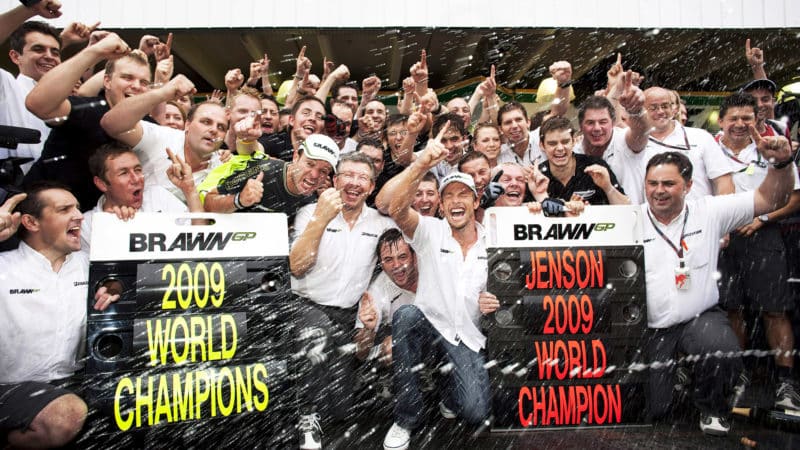Perhaps inevitably post-Benetton, insinuations followed the team about traction control and at times there was audible evidence that the Ferrari had some electronic help in getting its power down. But what Ferrari had during this time was not traction control in the strictest sense of the term, but rather a clever interpretation of the regulations that forbade any torque reduction reaction from the ECU to a spinning wheel. What the Ferrari system was doing was anticipating wheelspin rather than reacting to it and was thereby technically legal. Other engine manufacturers came to realise this in time and at least one was using a similar system before the technology was re-admitted in 2002.
These are the murky waters of F1, pushing the rules and politicking. Everyone plays them, but Brawn perhaps most adeptly of all. But there was one area of advantage he claims not to have known. Many years later it emerged that Ferrari had enjoyed a rules veto since 1998, something Todt had negotiated with Max Mosley. “I was quite shocked when I discovered that existed,” says Ross. “It was never used to my knowledge and I couldn’t see how you could use it. Perhaps the threat of a veto had more impact [on the FIA] than ever using it.”

Brawn’s formative Benetton years were spent under Tom Walkinshaw
Paul-Henri Cahier / Getty Images
In 1999 – Brawn’s third year at Maranello – a constructors’ title finally came Ferrari’s way, the first in 16 years. Prior to that, the obstacles were always the designs of Adrian Newey, firstly at Williams and later at McLaren. Michael took a few against-the-odds wins during this time, when it was difficult to see the join between his own extraordinary skills and Brawn’s strategic nous. “It was a golden era for race strategy,” he recalls. “I’d had the good fortune of getting involved in strategy through sports car racing for a couple of years before F1. So I had a better insight. It was a small group and we were quick, nimble on our feet. We probably missed a few opportunities because we didn’t have the capacity to look at everything, but our hit rate was better than 50/50. It worked for a number of years – and at crucial times. The impression I got of the McLaren system was that it was broader-based and less dictatorial and sometimes that let them down, though occasionally it was to their advantage because they would have scanned and understood the broader situation. In later years, with the speed of communication with the factory and the enormous modelling, there was less scope for an innovative decision to swing it.”
❖
Schumacher narrowly defeated McLaren’s Mika Häkkinen in 2000 to become the first Ferrari-mounted world champion for 21 years – and from there the team bestrode the sport for several seasons. The energy eventually began to wane as first Rory went into retirement, then di Montezemelo, in trying to plan for a post-Schumacher future by signing Kimi Räikkönen, triggered Schumacher’s reluctant retirement at the end of 2006. Months earlier, Brawn had already decided he was going to take a sabbatical in 2007.

Schumacher/Brawn era at Ferrari brought unprecedented success
Grand Prix Photo
Negotiations regarding his Ferrari return broke down and Brawn opted instead for the altogether more difficult challenge of trying to make something from under-achieving Honda. He would be in the team principal role this time – and without Schumacher or Byrne. It was quite a test. The 2008 car was woeful and he spent much of his time trying to keep the input from Japan from compounding the difficulties faced at the Brackley factory. The course of events there would directly impact upon the fortunes of Mercedes to this day.
“It takes three years in my view to build a team,” he says. “When I joined Honda I tried to accelerate that process by not wasting time in the first year, just accepting what was there, bringing people in, getting to build a team up. That got abbreviated because they withdrew [at the end of 2008 following the world financial crisis], but that impetus and inertia just carried us through into the Brawn GP year.” Incredibly, Brawn GP won both world championships in its only year of existence.






